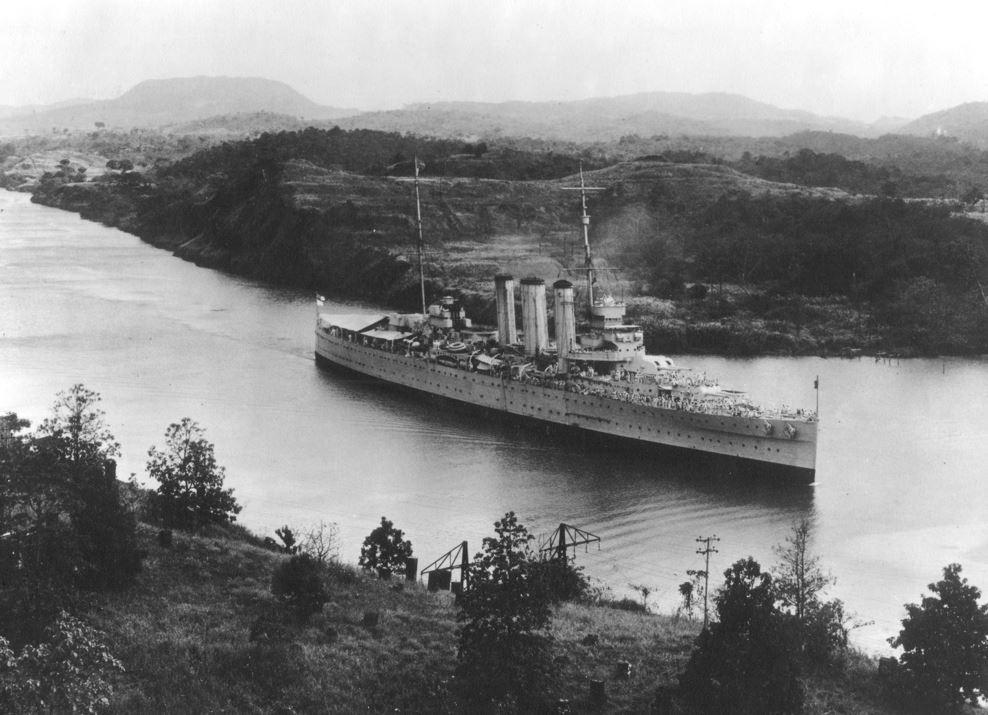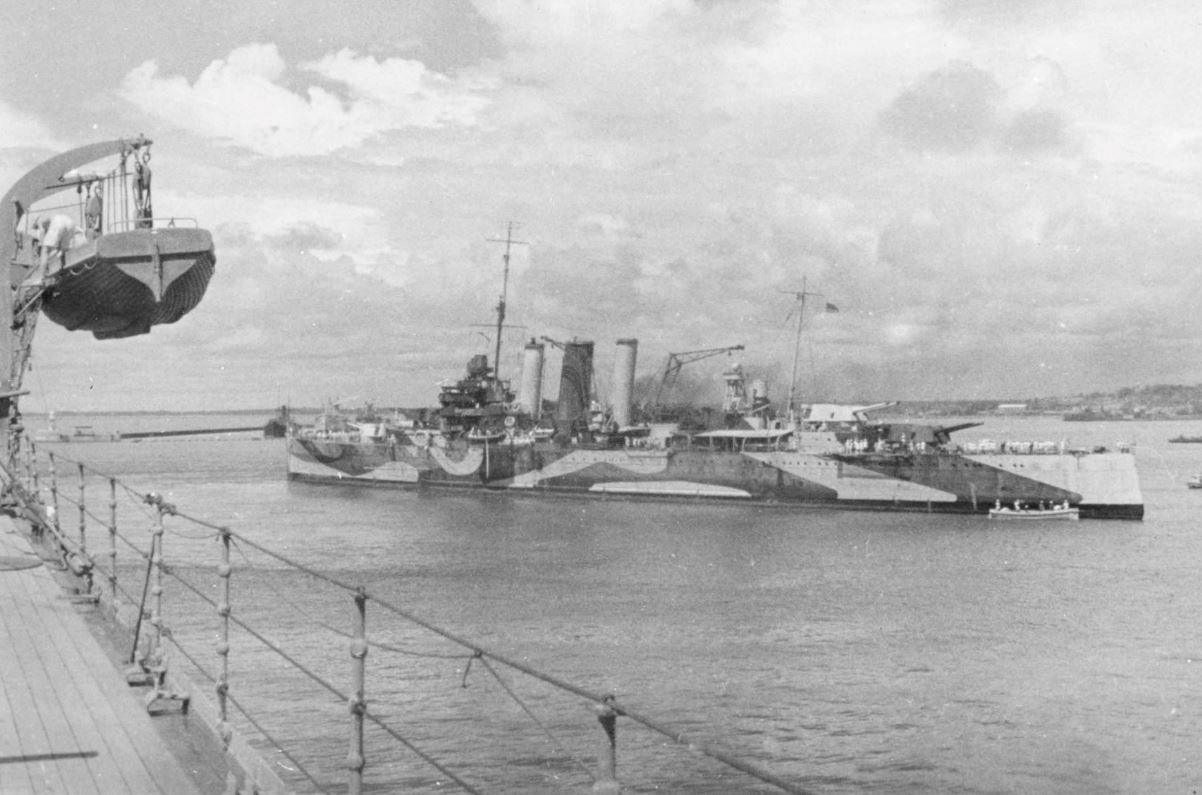HMAS Australia
From Our Contribution
Remarks
Ordered by the Australian Navy as part of an expansion program in the 1920s and built to the same design as HMAS Canberra. Following trials she departed Portsmouth for Australia on 3 Aug 1928. he spent most of the next six years in home waters before returning to the UK in 1935. From May 1935 until Jul 1936 she served in the Mediterranean before returning to Australia where she spent most of the rest of the year in Sydney or Jervis Bay. 1937 was spent on the east coast of Australia, before she paid off into reserve on 24 Apr 1938.
HMAS Australia was recommissioned on 28 Aug 1939 which means that Tom Johnson's time aboard was while she was in Reserve. She was to spent the first 9 months of the war on Australian coastal patrol after which she spent he next 3 months on convoy escort duties between Fremantle and Capetown, and then Capetown and Freetown on Africa's west coast. Following some patrol duties of the coast of French West Africa, attempting to install Free French forces there in place of Vichy government forces. Fighting broke out and Australia shelled French forces and was bombed and shelled in return. She then carried out escort duties in the North Sea before undergoing a refit in Liverpool, during which time she was damaged during a bombing attack by German airplanes.
Repaired she was again sent on escort duty to routes around Africa and between Africa and Australia. She served in the Indian Ocean from April to November 1941, and returned to Sydney where she became the Flagship of the Australian Squadron, moving her base to Noumea in February 1942. She undertook patrols of the surrounding waters before being involved in the Battle of the Coral Sea, and later the landings at Guadalcanal. Remaining as cover for the landing she was often attacked by enemy bombers. Early 1943 was spent in the Coral Sea area, and late 1943 to September 1944 saw HMAS Australia involved in bombarding enemy held islands between New Britain and Morotai in preparation for allied landings.
Australia led a group of Australian ships involved in the landing at Leyte Gulf in late October 1944. On 21 October she was hit by a kamikaze aircraft killing the Captain and 29 others. Another 65 were injured. She was then escorted to Manus Island and then to Espiritu Santo in the New Hebrides where she was repaired. On 5 Jan 1945 she was again in action supporting the landing on Luzon Island in the Philippines. Subjected to repeated kamikaze attacks, she was hit on 5,6,8, and 9 Jan 1945 during which time 44 crew were killed and another 69 wounded. This was her last action as she was sent to Plymouth in the UK for a major overhaul.
HMAS Australia arrived back in Australia on 25 Jan 1946, and on reaching Sydney on 16 Feb 1946 she was paid off into Reserve. Total casualties during the duration of the war were 87 men. She was to spend the last five years of her service as a training ship. She carried out varied ceremonial roles before being paid off for disposal on 31 Aug 1954. Sold as scrap to the British iron & Steel Corporation she was towed from Sydney to England.
Armament:
- 8 x 8-inch guns;
- 8 x 4-inch guns; and
- 4 x 3-pounder guns.
Battle Honours
- Atlantic 1939-43
- Pacific 1941-45
- Coral Sea 1942
- Savo Island 1942
- Guadalcanal 1942
- New Guinea 1942-44
- Leyte Gulf 1944
- Lingayen Gulf 1945
Crew members
- William Henry Knox 17 Feb 1937 - 26 Apr 1938
- † Thomas Charles Johnson 5 Feb 1939 - 29 Aug 1939
- Rowland Basil Devereux 9 May 1948 - 28 Mar 1949

